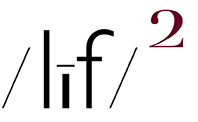all photos (embigenable)
IN HIS BOOK, Why People Photograph, Robert Adams wrote:
“…photographers must also face the threat that their vision may one day be denied them. Their capacity to find their way to art-to see things whole-may fail for an hour or a month or forever because of fatigue or misjudgement or some shift in spirit… For every Atget, Stieglitz, Weston, or Brandt who remain visionary to the end, there is an Ansel Adams who, after a period of extraordinary creativity, lapse into formula… when photographers get beyond copying the achievements of others, or just repeating their own accidental first successes, they learn that they do not know where in the world they will find pictures …”
FOR SOME TIME I HAVE BEEN RUMINATING ON the idea of “repeating my own first successes” inasmuch as, when began to make pictures, I did so with what I eventually came to recognize as my own personal vision. A vision that continues to dictate the manner in which I make pictures; id est, I photograph what I see in the manner of how I see it. Throw in the fact that, in my “serious” work, I tend make only square pictures, one could state that I am continually repeating myself, picture making wise.
On the other hand, I can rationalize myself out of that (square) box simply by noting the fact that what, referent wise, I picture is spread out all over the map of life and living, a picture making habit that label as discursive promiscuity. And BTW, in case you haven’t noticed, I also have an accepting and comfortable relationship with complexity.
Be all of that as it may, my vision remains firmly intact. However, I have acquired an itch that requires at least a bit of scratching. That is, the nagging desire to make pictures that do not conform to my “standard” deep depth-of-field, shades of the old-timey f 64 look. FYI, that desire is a long-standing one, for me, that has been exacerbated by the inherent quality of small(ish) sensor* digital photography wherein, typically, pictures tend to have deep depth of field, aka: everything in focus, nice and sharp. One might suggest that I am suffering from a (very) mild case of sharpness fatigue.
So, enter the iPhone and its PORTRAIT setting. Apple has continued to improve its functionality and I have been playing with it for a while now. And yes, the results are not exactly the same as making pictures with a large sensor, so called full-frame, camera coupled with a wide open, large aperture (aka, fast) lens. Plus, its function is limited to subjects within a 2-8ft range.
Nevertheless, to my eye and sensibilities, it does satisfy my desire for narrow DOF looking photographs. And, I do really appreciate the fact that I can modify the DOF effect to a greater or lesser degree-as many times as I wish after the picture is made.without permanently adjusting the original file.
All of that written, here’s the surprising thing that has appeared, seemingly out of nowhere; a significant number of these PORTRAIT setting pictures have been seen and made as “full frame” photographs. Who would / could have thought?
In any event, the one trait that I like most about these narrow DOF photographs is that, to my eye and sensibilities, they look just like photographs. And I do want my pictures to look like photographs.
*The magnification of a lens means how large (or small) a subject can be reproduced on the image plane (e.g., film and image sensor). As one increases magnification, the depth of field decreases. Conversely, as one decreases magnification, the depth of field increases.
